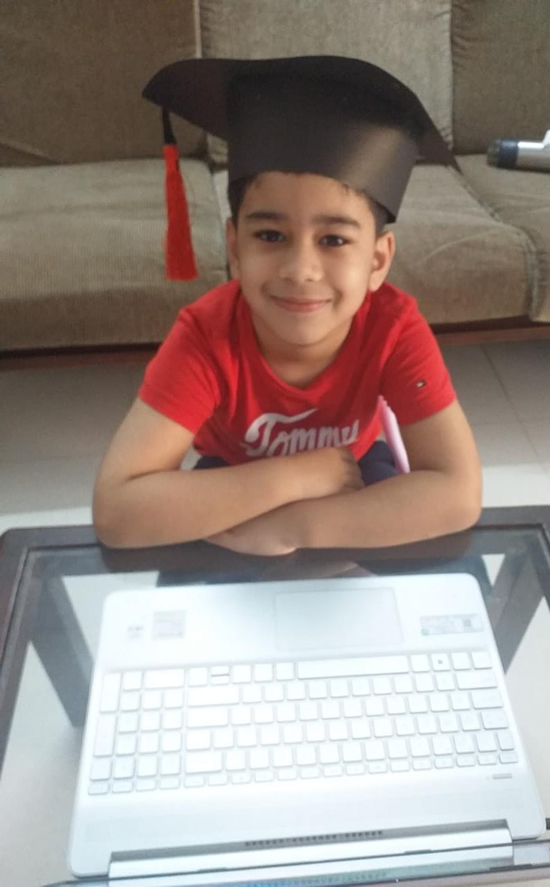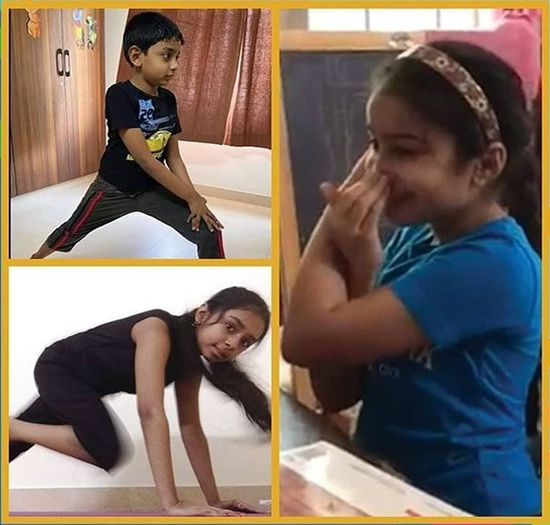The COVID-19 pandemic has caused unprecedented changes in our lives. One industry that has been forced into a radical change in thought, philosophy and practice is education. The need for isolation and distancing has mandated a shift from classroom teaching to online learning, right from kindergarten to university. School being the most important component of one’s life in the younger years, this meant for children, unquestioned, uncurtailed, blanket approval and access to gadgets and an exponential increase in screen-time.
Remote learning for children 9-years and above can require up to four hours of live instruction a day. That does not include the time for homework that must be completed on a computer. Many children also log several hours of recreational time on screens. A drastic reduction in movement, physical activity, people interaction and a sense of detachment from the real world around have been the direct fallouts.
Early data on impact of screen time suggest the following-
- Children with prolonged exposure to digital media showed different patterns of brain development.
- In very small children, variations were seen in language development and in their ability to adapt to changing surroundings. The screen provided them an unchanging, unreal world of security and com-fort.
- In older kids, reduced critical thinking and reasoning, difficulty in paying attention and slowness of response were observed. On the behavioural side, effects included reluctance to interact, people avoidance, loneliness and anxiety.
Overall, increased screen-time promoted a ‘tunnel vision’ in kids, by narrowing their focus of interest and limiting their other means of exploration and learning.
Dr Mala, a Senior Ophthalmologist & Eye Surgeon from Chennai says, “Our eyes are not meant for constant near vision. We were hunter gatherers, so our requirement was good distant vision. Continual ‘near work’ causes strain and in turn, fatigue, burning and visual discomfort. Moreover, lighting from gadgets is not uniform and has flickering and glare. When we stare at the gadget, we fail to blink. Unhealthy tears with toxic debris remain on the eye surface longer and fresh tears don’t coat the eye.”
“Online schooling has shot down physical activity at its very base,” Dr. Aparna, a leading Obesity and Weight-Loss expert from NewJersey observes. “This can cause a dramatic weight-gain and child obesity issues. Binge eating and mindless-munching are other dangers.’”
On the flip side, however, online learning has opened a host of new possibilities for schools and education providers-
- To reimagine and remodel the way teaching and learning have happened so far.
- To change the popular perception of gadgets being viewed as sources of entertainment and gaming to one of intuitive, interesting, goal-oriented learning.
- To up the quality and ease of learning – available any-time, any-where.
- To allow learning at the pace of the learner by removing peer pressure.
- To augment learning continuously through digital means.

A chat with the teacher community gives us some new insights. Many feel that online learning has
- Made teachers forward-thinking and tech-savvy.
- Given parents, by choice and/or invitation, the opportunity to view how learning happens. This has changed the way they perceived the teacher’s job.
- Helped kids who are oriented to visual media, adapt very fast.
They believe blended learning is in order for the future.
The digital world is expanding, and the new generations increasingly need to develop digital skills and competence for a smooth ride. Saying ‘No’ to gadgets is not going to help in any way. Reducing low quality screen-time, fostering and maintaining the positive change in perception of gadgets as a tool for learning, and staying connected with the real world will be the tricks to hack.
‘Parents must make a concerted attempt to role-model off-screen activities’ believes Dr. Mala. She advises –
- Regular distance vision breaks- following the 20-20-20 rule: every 20 minutes, look at something 20 feet away for 20 seconds.
- Variable Focusing – with off-screen activities, use of paper-bound textbooks and notebooks.
Dr. Aparna recommends limiting screen-time, planning separate time everyday for off-screen activities, avoiding television or gadgets in bedrooms, rewarding kids for off-screen time and family outdoor activities, to mitigate the risks.
Parents and care-givers can take small measures such as the following to take the edge off the perils of in-creased screen-time at home-
Environment-
- Ensure proper lighting conditions at home and positioning of the screen.
- Guide the child on comfortable sitting posture, relax neck and shoulders.
Controls-
- Try to use in-device applications that allow the parent to restrict the time on screen, per day per session.
- Learning time ‘on-screen’ means free-time is ‘off-screen’.
- Digital Quarantine – Use a separate device for school that does not provide access to any other activity.

In line with these considerations, the management at Hari Shree has been conscious of the flip-side of virtual learning, all through the pandemic. They have adopted several wellness measures across all classes to mitigate the perils and to help children perceive technology as a tool of empowerment.
Some important ones are –
- Giving a break of 15 minutes after every hour and ensuring that students get time away from the screen. Teachers ensure that students move away from the computer during break while the meeting link is still active.
- Following guidelines from the Ministry of Human Resources Development for nationwide alignment.
- Restricting use of online study materials and encouraging students to use physical books & note-books.
- Encouraging kids from lower classes to perform yoga and other movement-oriented activities along with the teacher every now and then, during instruction hours.
Striking the delicate balance between screen time and learning, with the health of students and teachers as a priority, Hari Shree has redefined online learning as an efficient opportunity rather than a compulsion.
Acknowledgements-
My sincere thanks to-
- The Management & Teachers, Chettinad Hari Shree Vidyalayam, Chennai
- Dr. Mala Balagopal, Consultant Ophthalmologist & Eye Surgeon, Sooriya Hospital, Chennai
- Dr. Aparna Chandra, Medical Director, Jersey Medical Weight Loss Center, NewJersey, USA for their valuable inputs.





